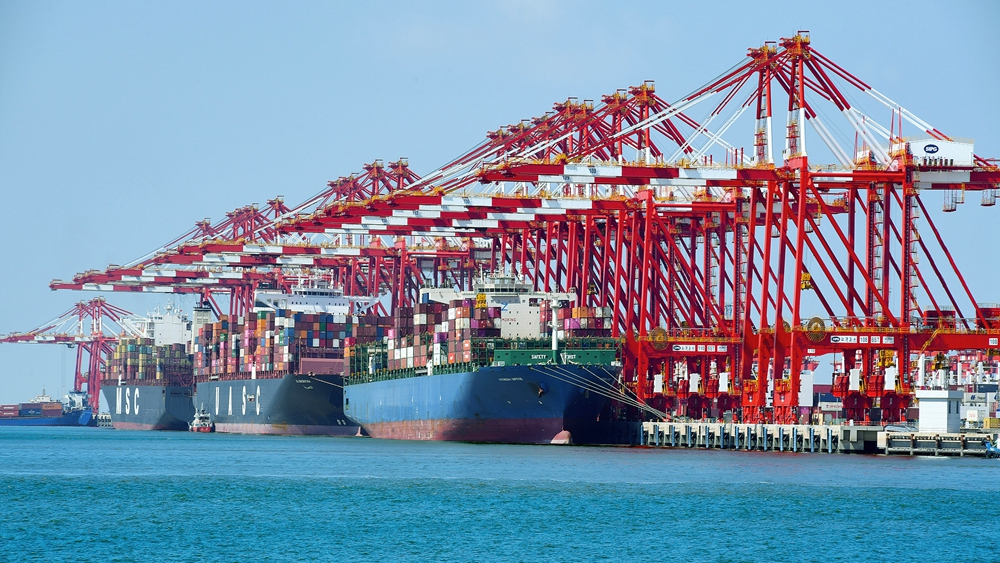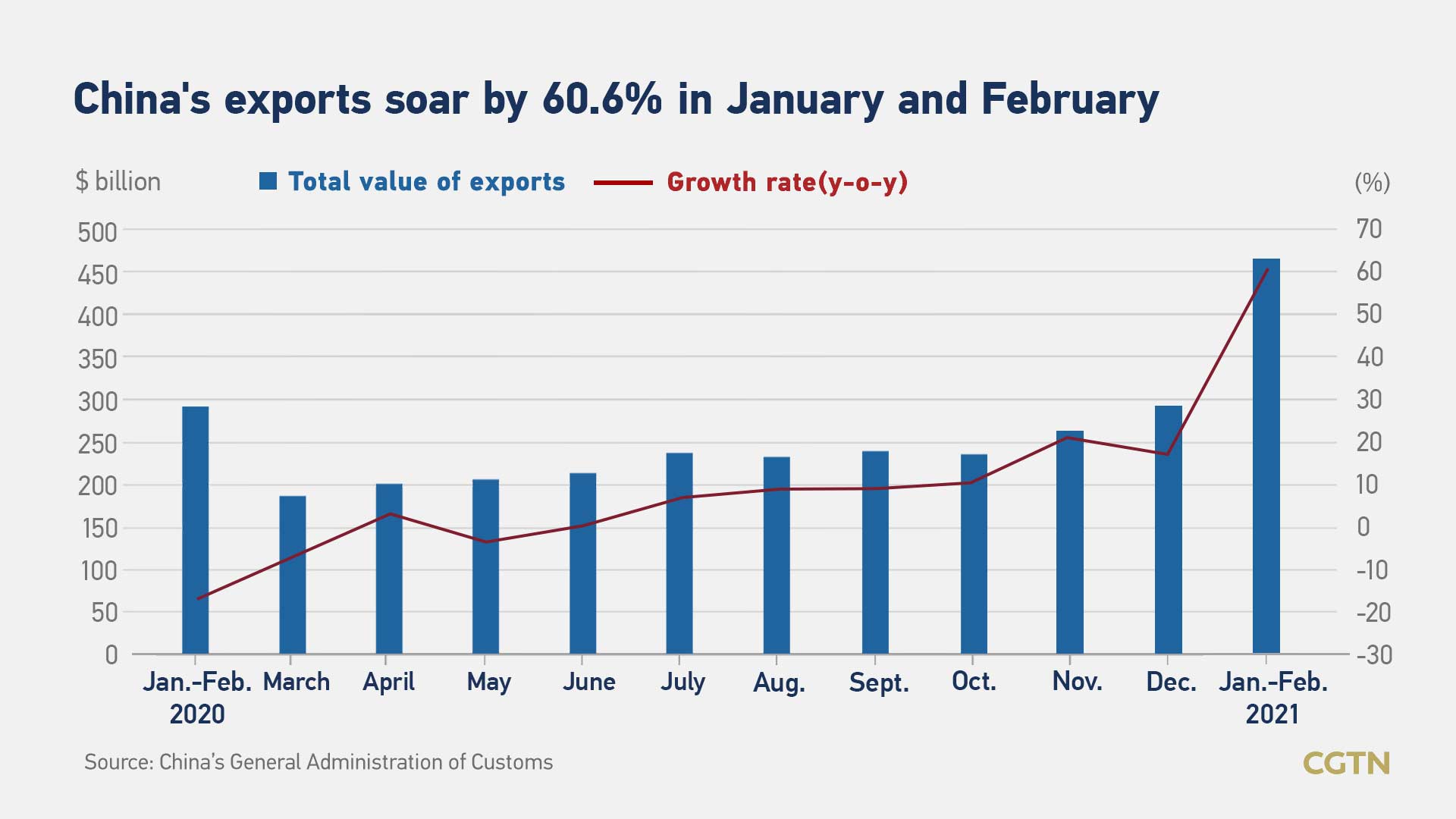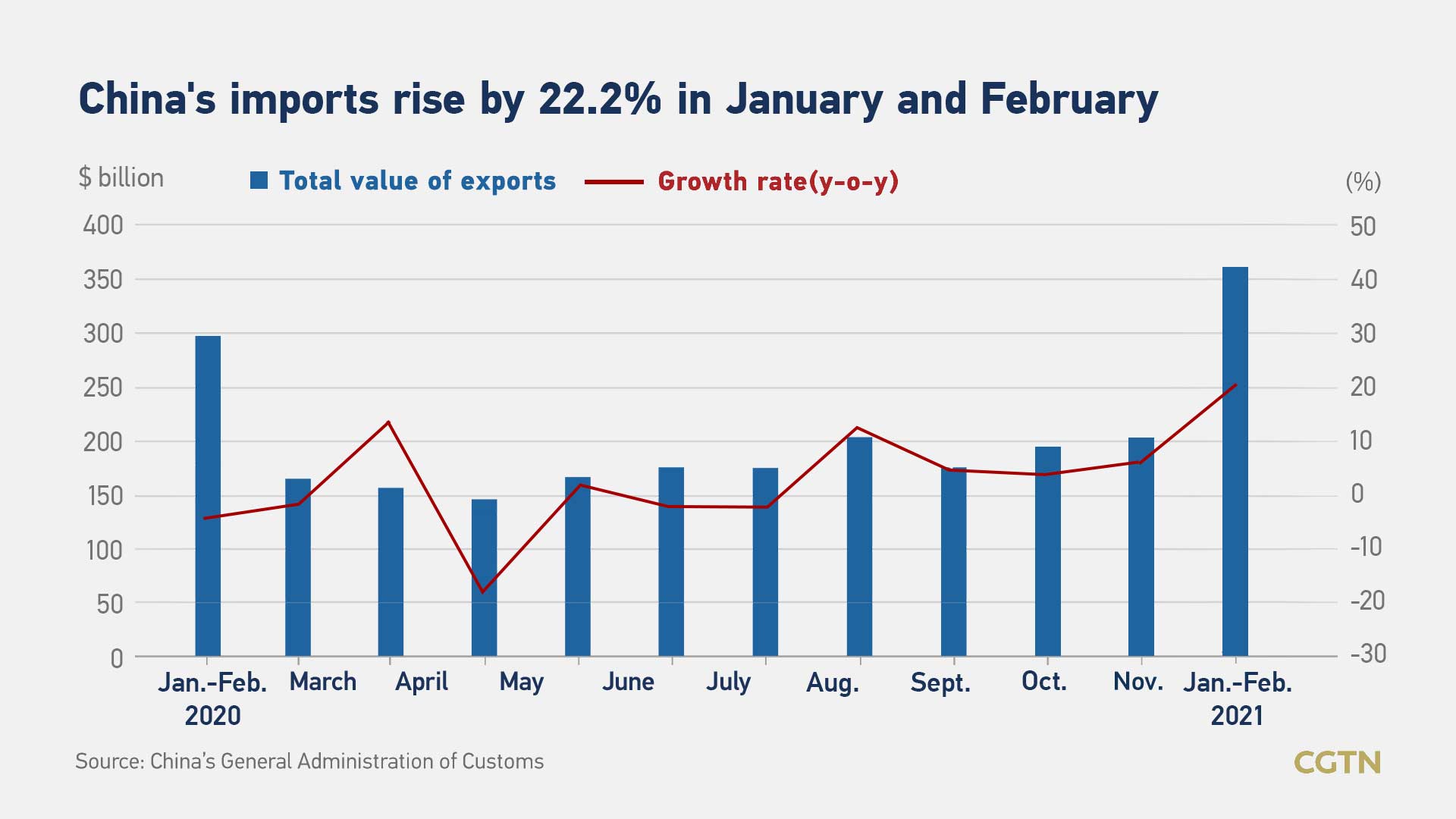
The Shanghai Port on October 11, 2020. /CFP
The Shanghai Port on October 11, 2020. /CFP
Despite the Chinese Lunar New Year holiday and the epidemic, China's foreign trade increased significantly in January and February, thanks to strong external demand, a recovering domestic economy and a low base last year due to strict COVID-19 control measures, the country's customs authority said on Sunday.
Foreign trade of goods surged by over 41 percent year on year in the first two months to $834.5 billion, with the trade balance at $103.25 billion, according to the General Administration of Customs (GAC).
Exports in the same period soared by 60.6 percent to $468.9 billion and imports rose by 22.2 percent to $365.6 billion, both beating forecasts in a Reuters poll of 22 economists, 38.9 percent and 15 percent, respectively.
For February alone, exports skyrocketed 154.9 percent from the previous year at $204.9 billion and the import saw a relatively smooth increase – 17.3 percent – at about $167 billion.

The Association of Southeast Asian Nations (ASEAN) was still China's largest trade partner in the first two months, with total trade volume increasing by 32.9 percent year on year to 786.2 billion yuan (about $121 billion), accounting for 14.4 percent of China's total trade volume, followed by the European Union, the United States, and Japan, data from the GAC showed.
Data showed that in the first two months, the import and export of China's central and western regions rose 55.8 percent year on year to 975.1 billion yuan, 23.6 percentage points higher than the overall growth rate of the country's foreign trade.
Recovering economy both at home and abroad
The surge in exports was driven by a rebound in foreign demand, according to the GAC, citing improvements in manufacturing industries in the European Union and the United States and their increased imports of Chinese products thanks to fiscal stimulus measures.
GAC data showed that in the first two months, China's exports to Europe, the United States and Japan increased by 59.2 percent, higher than the overall increase in exports.
The 60.6 percent growth could mark the peak in export data, as the sweet spot may be coming to an end. Year-on-year export growth could remain strong in March but slow rapidly afterwards, as the favorable base effects are set to ease and could even reverse in coming quarters, said Lu Ting, chief China economist at Nomura.
Meanwhile, the majority of manufacturing employees in China chose to stay put over the Chinese Lunar New Year holidays, according to the GAC.
"Our survey showed a lot of firms in export-oriented provinces stayed open, and orders that usually only get delivered after the new year had been delivered normally," the body said.

According to the GAC, the Chinese economy's continuous expansion in January and February, coupled with its manufacturing purchasing managers index (PMI) remaining in expansion territory for 12 consecutive months, promoted rapid import growth.
"Due to the impact of the new coronavirus, overall trade (in yuan terms) in January and February last year fell 9.7 percent, and the low base was one of the reasons for the larger increase this year," the customs said.
Import growth may further increase in the coming months due to a combination of domestic demand recovery, higher commodity prices and strong RMB appreciation since June 2020, Lu said.
The rise in import growth is expected to be more impressive in April-May due to an even lower base during the same period last year, the Nomura economist added.
However, even when compared with normal years, such as the comparable periods in 2018 and 2019, growth in China's overall trade was around 20 percent, the GAC said.
China has set its GDP growth rate at over 6 percent for 2021 as its economic recovery gathers steam and full energy is devoted to promoting reform, innovation and high-quality development, Premier Li Keqiang said Friday while delivering the report on the government's work at the fourth session of the 13th National People's Congress.
"In 2021, China will continue to face many development risks and challenges, but the economic fundamentals that will sustain long-term growth remain unchanged," Li said, adding that the country has confidence in its economic recovery.

